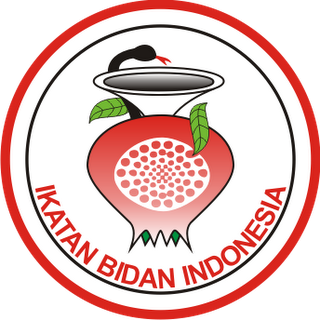Role of Birth Companions in Influencing Labor Duration on Partus Mother
https://doi.org/10.33860/jbc.v7i1.3876
Keywords:
Birth companion, Pregnancy, Oxytocin, labor durationAbstract
Introduction: The maternal mortality rate in Indonesia remained high at approximately 7,389 deaths in 2021, attributed to several factors. One significant factor was prolonged labor caused by uterine contraction abnormalities due to disrupted oxytocin hormone secretion resulting from increased stress responses, thereby highlighting the importance of the presence of a birth companion. Objective: This research aimed to know the influence of birth companions on labor duration. Methods: This study employed a cross-sectional design and was conducted within the working area of the Public Health Center in Palu City, Central Sulawesi, from January to June 2024. The sample comprised 50 postpartum mothers. Data were collected using observation sheets, processed using SPSS, and analyzed with the Chi-square test. Results: The results indicated no significant relationship between the mother's choice of birth companion and the duration of labor, with a p-value > 0.05 (p-value = 0.642). However, 60% of mothers in labor chose their husband as their birth companion. Conclusion: There was no significant relationship found in this study's variables due to the limited knowledge possessed by birth attendants, which resulted in suboptimal task performance. It is recommended that future researchers conduct studies focusing on improving the knowledge of birth attendants or exploring other variables that influence labor progress.
Downloads
References
Bharti, J., Kumari, A., Zangmo, R., Mathew, S., Kumar, S., & Sharma, A. K. (2021). Establishing the practice of birth companion in labour ward of a tertiary care centre in India-a quality improvement initiative. BMJ Open Quality, 10(Suppl 1). https://doi.org/10.1136/bmjoq-2021-001409
Dixon, L., Skinner, J., & Foureur, M. (2013). The Emotional and Hormonal Pathways of Labour and Birth: Integrating Mind, Body and Behaviour. New Zealand College of Midwives Journal, 48, 15–23. https://doi.org/10.12784/nzcomjnl48.2013.3.15-23
Dubey, K., Sharma, N., Chawla, D., Khatuja, R., & Jain, S. (2023). Impact of Birth Companionship on Maternal and Fetal Outcomes in Primigravida Women in a Government Tertiary Care Center. Cureus, 15(5), e38497. https://doi.org/10.7759/cureus.38497
F. Gary Cunningham, Kenneth J. Leveno, Steven L. Bloom, Jodi S. Dashe, Barbara L. Hoffman, Brian M. Casey, C. Y. S. (2021). Mechanisms of Dystocia. In Obstetri Wiliam (pp. 1–30). http://repository.stikesrspadgs.ac.id/44/1/Williams%20Obstetrics-1376hlm.pdf
Friedman, E. A., & Cohen, W. R. (2023). The active phase of labor. American Journal of Obstetrics and Gynecology, 228(5), S1037–S1049. https://doi.org/10.1016/j.ajog.2021.12.269
Gromova. (2019). Anomalies of labour activity. In Onstetric (p. 16). https://www.ncbi.nlm.nih.gov/books/NBK459260/
Jayasundara, D., Jayawardane, I., Weliange, S., Jayasingha, T., & Madugalle, T. (2024). Impact of continuous labour companion- who is the best: A comprehensive meta-analysis on familiarity, training, temporal association, and geographical location. https://doi.org/10.1101/2024.02.02.24302191
Kabakian-Khasholian, T., & Portela, A. (2017). Companion of choice at birth: Factors affecting implementation. BMC Pregnancy and Childbirth, 17(1), 1–13. https://doi.org/10.1186/s12884-017-1447-9
Kemenkes RI. (2022). Profil Kesehatan Indonesia 2021. Jakarta: Kementerian Kesehatan R.I. https://kemkes.go.id/id/profil-kesehatan-indonesia-2021
Kungwimba, E., Malata, A., Maluwa, A., & Chirwa, E. (2013). Experiences of women with the support they received from their birth companions during labour and delivery in Malawi. Health, 05(01), 45–52. https://doi.org/10.4236/health.2013.51007
Lunda, P., Minnie, C. S., & Benadé, P. (2018). Women’s experiences of continuous support during childbirth: a meta-synthesis. BMC Pregnancy and Childbirth, 18(1), 167. https://doi.org/10.1186/s12884-018-1755-8
Maaløe, N., Kujabi, M. L., Nathan, N. O., Skovdal, M., Dmello, B. S., Wray, S., van den Akker, T., & Housseine, N. (2023). Inconsistent definitions of labour progress and over-medicalisation cause unnecessary harm during birth. BMJ (Clinical Research Ed.), 383, e076515. https://doi.org/10.1136/bmj-2023-076515
Seth, I., Sunayana, Singhal, S., Seth, A., & Garg, A. M. (2023). The impact of birth companion on respectful maternity care and labor outcomes among Indian women: a prospective comparative study. International Journal of Reproduction, Contraception, Obstetrics and Gynecology, 12(12), 3508–3514. https://doi.org/10.18203/2320-1770.ijrcog20233626
Walter, M. H., Abele, H., & Plappert, C. F. (2021). The Role of Oxytocin and the Effect of Stress During Childbirth: Neurobiological Basics and Implications for Mother and Child. Frontiers in Endocrinology, 12(October), 1–10. https://doi.org/10.3389/fendo.2021.742236
World Health Organization. (2018). WHO Recommendation on Antenatal Care for a Positive Pregnancy Experience: Summary. The Lancet, 387(10017), 1–10. https://doi.org/10.1186/1742-4755-10-19.5
World Health Organization. (2020). Companion of choice during labour and childbirth for improved quality of care. Publications of the World Health Organization, 4, 1–7. https://www.who.int/publications/i/item/WHO-SRH-20.13
Wulansari, I., Yusuf, N. A., & Haji Jafar, C. P. S. (2022). Prolonged Labor Characteristics: A Study in Gorontalo. Jurnal Aisyah : Jurnal Ilmu Kesehatan, 7(1), 23–28. https://doi.org/10.30604/jika.v7i1.754
Yaya Bocoum, F., Kabore, C. P., Barro, S., Zerbo, R., Tiendrebeogo, S., Hanson, C., Dumont, A., Betran, A. P., & Bohren, M. A. (2023). Women’s and health providers’ perceptions of companionship during labor and childbirth: a formative study for the implementation of WHO companionship model in Burkina Faso. Reproductive Health, 20(1), 1–12. https://doi.org/10.1186/s12978-023-01597-w
Yohanna, W. S. (2016). Analysis Of Factors Related To The Old Labor. Jurnal Aisyah, 1, 1–14. Retreived from https://aisyah.journalpress.id/index.php/jika/article/view/WSY/0

Downloads
Published
How to Cite
Issue
Section
License
Copyright (c) 2025 Narmin, Putri Mulia Sakti, Sri Yanti Kusika

This work is licensed under a Creative Commons Attribution-ShareAlike 4.0 International License.
Authors who publish with Jurnal Bidan Cerdas agree to the following terms:
- Authors retain copyright and grant the journal right of first publication with the work simultaneously licensed under a Creative Commons Attribution License (CC BY-SA 4.0) that allows others to share the work with an acknowledgment of the work's authorship and initial publication in this journal.
- Authors are able to enter into separate, additional contractual arrangements for the non-exclusive distribution of the journal's published version of the work (e.g., post it to an institutional repository or publish it in a book), with an acknowledgment of its initial publication in this journal.
- Authors are permitted and encouraged to post their work online (e.g., in institutional repositories or on their website) prior to and during the submission process, as it can lead to productive exchanges, as well as earlier and greater citation of published work.

This work is licensed under a Creative Commons Attribution-Share Alike 4.0 International License
You are free to:
- Share, copy and redistribute the material in any medium or format
- Adapt, remix, transform, and build upon the material for any purpose, even commercially.
- The licensor cannot revoke these freedoms as long as you follow the license terms.




